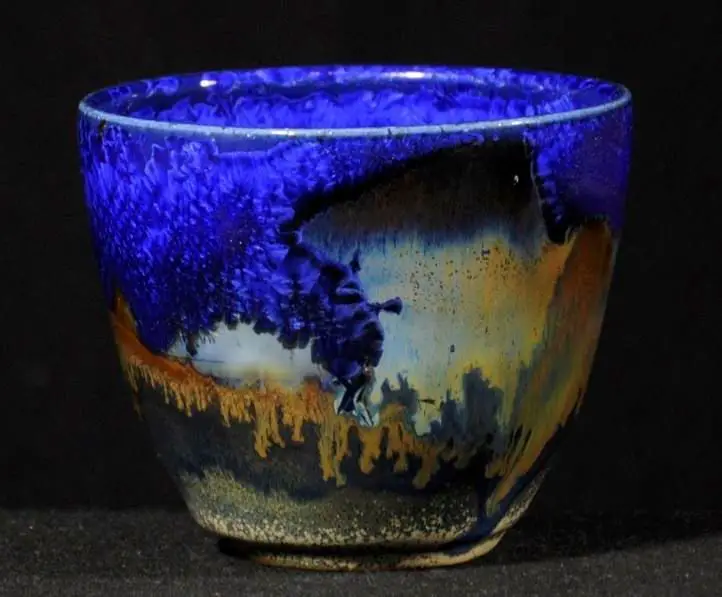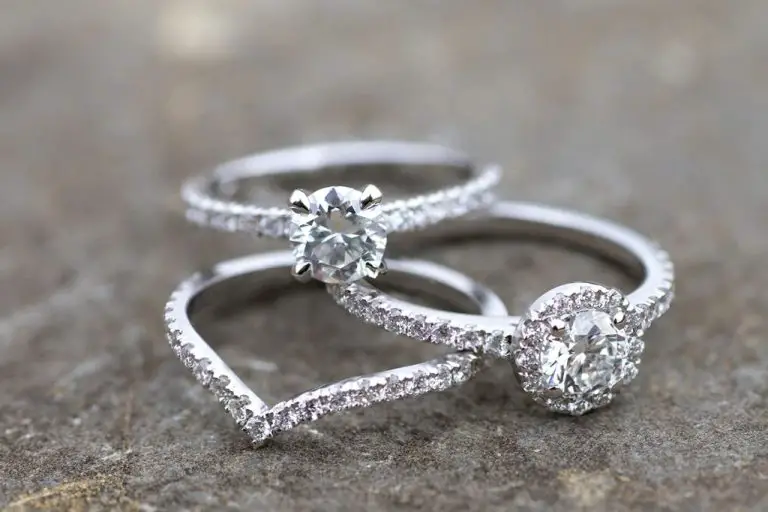How To Make Black Terra Cotta?
Terra cotta is a type of baked clay that has been used for centuries to create pottery, figurines, roof tiles, and other decorative and functional objects. The term “terra cotta” comes from the Italian words for “baked earth.” Unlike common earthenware, terra cotta clay contains little iron oxide and fires to a reddish orange color. Terra cotta is known for its durability, affordability, and ability to be glazed in vibrant colors.
The history of terra cotta dates back over 10,000 years to some of the earliest pottery making civilizations in Asia, the Mediterranean, and the Americas. Architectural terra cotta became popular in the late 19th century and was used to adorn buildings across Europe and North America. The richly ornamented terra cotta façades from this era are now recognized as works of art.
Creating black terra cotta involves carefully preparing a smooth clay body, sculpting or molding the desired shape, drying the clay thoroughly, applying black mineral pigments, and firing at high temperatures. With patience and practice, black terra cotta can be used to produce beautiful pottery, garden decor, and more.
Materials Needed
To make black terra cotta, you will need the following materials:
Clay – A specific type of earthenware clay called black terra cotta clay. This clay contains iron oxide and fires to a black color.
Colorants – Manganese dioxide and iron oxide can be added to the clay to produce a deep black color.
Glazes – A black glaze can be used to enhance the black color. Look for glazes specifically made for terra cotta clays.
Tools – A potter’s wheel for shaping smooth terra cotta forms. Sculpting tools like loop tools, ribs, and wooden modeling tools for handbuilding.
Preparing the Clay
Properly preparing the clay is an important step in making black terra cotta. Start by wedging or kneading the clay thoroughly. This helps blend the clay particles evenly and removes any air pockets. Work the clay by pushing down and folding it over itself repeatedly. The clay should be soft and pliable, but not sticky. Add small amounts of water if the clay is too crumbly. Knead until the clay has an even, smooth consistency. Avoid overworking the clay as too much wedging can introduce air bubbles. The prepared clay should be free of lumps and ready for shaping.
Shaping the Terra Cotta
Once your clay is prepared, it’s time to start shaping it into the desired terra cotta forms. There are a few different techniques you can use:
Using a Potter’s Wheel
For perfectly symmetrical shapes like vases, bowls, plates, etc., the potter’s wheel is ideal. Center your ball of clay on the wheel and start spinning. Using your fingers and some water, gently shape the clay into the desired form. It takes practice, but the spinning wheel allows you to smoothly shape and refine curved terra cotta pieces.
Hand Sculpting
For free-form shapes, opt for hand sculpting. Flatten and roll out pieces of clay into basic shapes like balls, coils, slabs. Then use your fingers and simple sculpting tools to mold the clay how you like. This gives you the most creative freedom for making one-of-a-kind terra cotta sculptures by hand.
Molding Shapes
For consistent results in mass production, use terra cotta molds. Simply press your prepared clay into the mold cavity to instantly form shapes like bricks, tiles, or decorative pieces. Remove any excess clay and then carefully extract the molded terra cotta shape from the mold.
Drying the Clay
Once the terra cotta has been shaped, it needs to be dried slowly and evenly to prevent cracking before firing. There are a couple methods for properly drying the clay:
Letting it Air Dry: Allow the shaped terra cotta to sit at room temperature out of direct sunlight. Drying time can range from several days to weeks depending on the size and thickness of the piece. Rotate the piece periodically so it dries evenly. Monitor for cracking and distorting.
Using a Dehydrator: A food dehydrator or other low-heat electric appliance can be used to slowly dry terra cotta. Set the temperature below 200 degrees Fahrenheit and allow the pieces to dry over several hours or days, checking periodically. This helps prevent uneven drying.
Monitoring Cracking: Check regularly for cracking which can occur as moisture leaves the clay. Cracking can be minimized by slow, even drying. Occasional cracks may be repaired once the piece is dry. Severe cracking may require rewetting the clay and reshaping.
Applying Color
There are a couple different methods for applying black color to terra cotta. The most common options are using manganese dioxide or iron oxide. These materials can be mixed directly into the clay before shaping. However, they are often brushed onto the surface as a clay slip after shaping and drying.
To create a black clay slip, mix manganese dioxide or iron oxide powder with water to form a thick, smooth liquid. The slip consistency should be like heavy cream. Apply the black slip generously to the dried terra cotta using a soft brush. Ensure all surfaces are coated evenly. Let the slip dry fully before continuing to firing.
Brushing black slip onto the terra cotta piece allows for control over the intensity of color. Multiple coats can be applied to make the black darker and more opaque. Using a slip glaze is also useful for handbuilding and sculpture where the clay is shaped by hand, rather than thrown on a wheel.
First Firing
The first firing, also known as bisque firing, is an important step in creating black terra cotta. This initial firing hardens the clay body and prepares it for applying glaze and the final firing. When bisque firing, it’s crucial to heat the kiln slowly, generally no faster than 200°F per hour. Rushing the bisque firing can cause cracks or breaks. It’s best to follow the manufacturer’s recommended firing schedule for the type of clay used or consult a kiln firing chart.
Aim to reach a final bisque temperature between Cone 04 and Cone 06 (around 1885°F-2165°F or 1030°C-1185°C). Soak at the peak temperature for anywhere from 30 minutes to 2 hours. The longer the soak, the harder the clay will become. Use pyrometric cones to determine when the target temperature has been reached.
After reaching the peak temperature, allow the kiln to cool naturally with the door closed. Never open the door until the kiln has cooled below 300°F. Sudden cooling can cause breakage. When the kiln has cooled to room temperature, the bisque ware will be ready for applying glaze.
Glazing
Applying a glaze layer to the terracotta before the final firing gives the surface a glass-like appearance and protects it from damage. There are several options for choosing glazes.
Options for glazes:
Glazes come in a wide variety of colors and finishes. Popular choices include glossy glazes in colors like blue, green, white, and black. There are also matte glazes that give a more subdued effect. Metallic glazes containing gold, silver, or copper can create beautiful iridescent surfaces. Consider testing out sample glaze types on test pieces to choose your desired colors and textures.
Brushing on vs dipping:
Glaze can be applied by either brushing it directly onto the bisqueware surface with a soft brush, or dipping the entire piece into a container of glaze. Brushing gives more control and allows combining multiple colors, while dipping ensures full, even coverage. For intricate sculptural pieces, carefully brushing the glaze into every crevice may be best. For simple shapes, dipping provides a foolproof coating.
Getting full coverage:
It’s important to fully coat all surfaces of the bisqueware piece to ensure the glaze protects the clay body during firing. When brushing on glaze, apply in smooth, overlapping layers. Rotate the piece to reach all angles. Check for any missed bare spots. When dipping, allow excess glaze to drip off smoothly, then wipe any pooled glaze from the bottom. Apply multiple coats if needed to get a continuous glaze layer over the entire surface. Full glaze coverage prevents exposed areas from under-firing.
Final Firing
The final firing process is critical for finishing your black terra cotta pottery. After the pottery has been shaped, dried, colored, and glazed, it must be fired a second time in the kiln.
For the final firing, the kiln temperature should be raised to around 2,100°F to 2,300°F. Slowly heat up the kiln at a rate of around 200°F per hour. The purpose of this high temperature firing is to melt the glaze and fuse it to the clay body.
The glaze will become molten at these high temperatures. This allows the glaze to flow and spread evenly across the terra cotta surface. Firing at the right temperature range helps fuse the glaze nicely to the clay body for a smooth finished look.
After reaching the target temperature, allow the kiln to cool down slowly over a period of 10-12 hours. Do not open the kiln until it has cooled completely to avoid thermal shock. Slow cooling allows the glaze and clay to stabilize properly. Once cool, your black terra cotta pottery is ready to be removed from the kiln.
With proper final firing, your terra cotta should have a beautiful, vibrant black finish. The glaze will be shiny and durable. Use care when handling the finished piece to avoid chipping the glazed surface.
Conclusion
Making your own beautiful black terra cotta at home can be rewarding, yet does require some time and effort. Reviewing the key steps, from choosing the right clay and tools, to proper shaping, drying, firing, and glazing techniques will help ensure success. Taking care with each step of the process, and not rushing drying or firing times, is advised. With practice, you’ll be able to shape intricate designs and patterns.
Some tips for achieving the best results: use an electric kiln for most consistent firing, let your pieces fully dry before firing to prevent cracking, and don’t overload the kiln. Test glazes first before applying to your finished piece. Consider creative ways to use your terra cotta creations, such as for plant pots, sculptures, serving dishes, or wall art. With a rich saturated black finish, terra cotta makes a striking statement wherever it’s used.
Making your own terra cotta pottery can be immensely gratifying. With some care and patience, you’ll be creating beautiful black terra cotta works of art in no time that you can proudly display or give as gifts.




